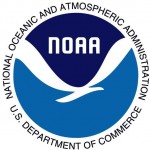HABScope
In Florida and soon in Texas, citizen scientists are helping to protect public health and the economy by supporting the Red Tide Respiratory Forecast. This beach-level risk forecast activated during red tide conditions tells beachgoers what impacts are expected to be at individual beaches at different times of the day. The Forecast saves those susceptible to red tide impacts, prevents visits to their doctors and emergency rooms, and supports businesses that can lose thousands of dollars during red tides because visitors haven't been able to make informed decisions about whether or not going to the beach is safe. The citizen scientists use HABscope, a portable microscope system that utilizes video and artificial intelligence (AI) to quickly analyze water samples for near real-time cell counts of Karenia brevis, the organism that causes red tides in the Gulf of Mexico. These samples are combined with other environmental data and the result is the Red Tide Respiratory Forecast.
Geographic Scope: West coast of Florida; coastal beach locations
Project Status: Active - recruiting volunteers
Participation Tasks: Audio or video recording, Data entry, Identification, Observation, Photography,
Start Date: 10/1/2018
Project Contact: hab@noaa.gov
Federal Government Sponsor:

Other Federal Government Sponsor:
Fields of Science: Biology, Computers and technology, Ecology and environment, Nature and outdoors, Ocean/water and marine
Intended Outcomes: The 'red tide' blooms can be quite patchy, so the HABscope project has the goal of moving us from the current weekly sampling for Karenia brevis at selected beaches to 'every beach, every day.'

